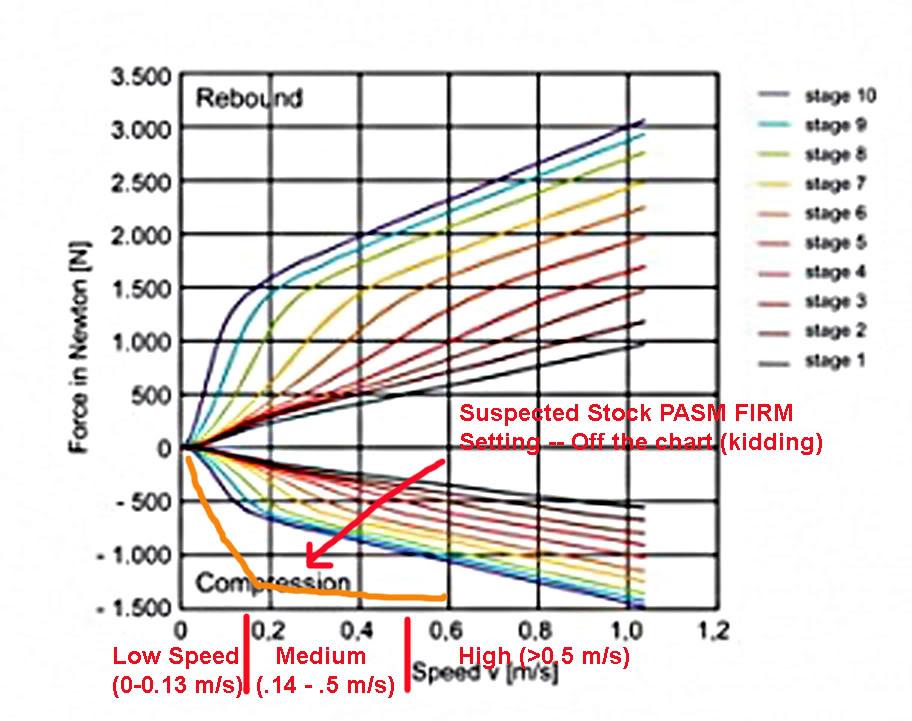You must be logged in to rate content!
2 minute(s) of a 612 minute read
5-16-2013
Turn up the speaker volume control first: Walter Rohrl in the Bilstein ClubSport - a more track oriented shock than my Damptronic, with independent bump and rebound damping adjustment.
http://www.awe-tuning.com/bilstein-c...pension-system
(If you don't know: Walter Rohrl is Porsche's chief test driver and consultant to Bilstein. The reason Porsche allow this is because Bilstein makes the OEM suspension as well.)
5-18-2013
Shock dyno of Bilstein PSS10 and simple video of how it's done. On the shock dyno graph, note that the x axis is the speed of the shock shaft, *not* of the vehicle. High speed is the equivalence of hitting a sudden bump on the road, low speed is the equivalence of taking a curve.
For those with Bilstein Damptronic - you don't have to worry about this; it does everything automatically and I am only posting for anyone curious about this topic.
Each of these curves represent one of those clicks that you set on Bilstein PSS10, in other words, forces are manually adjusted, versus Bilstein Damptronic, where the "clicks" are performed by the ECU. The higher the forces the stiffer and less compliant the system becomes (for example high rebound damping will cause car to become quite jittery and I suspect this is the flaw of first generation PASM in our Turbo that Porsche corrected in gen 2 PASM). Every setting will have pluses and minuses, therefore in general, for amateur level street driving IMHO it's best to stay in middle/moderate settings.
Pro racers use different curves for different types of racing/racing surfaces, etc. Besides stiffness, damper adjustment also affect understeer/oversteer. This is a complicated process and I am just posting the tip of the iceberg. As always, any expert feel free to chime in as needed.
